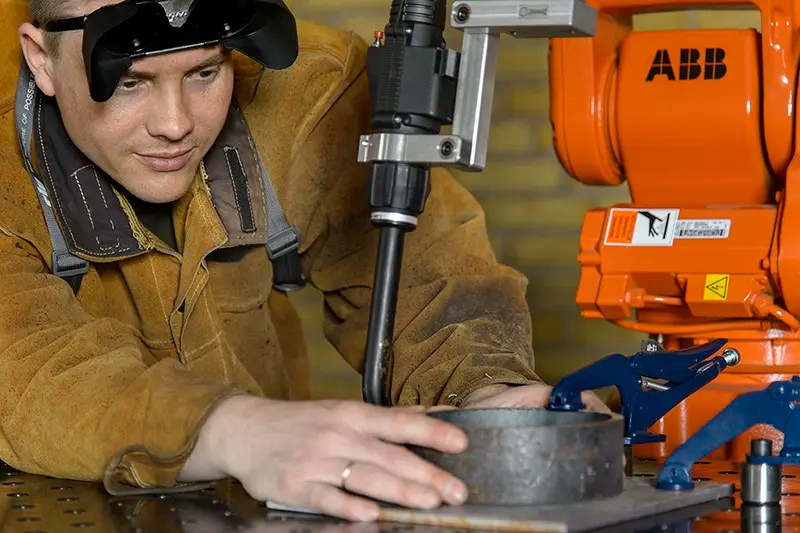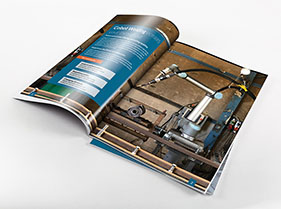If you are looking for a way to improve your welding productivity, quality and efficiency, you might be considering investing in a robotic welding system. But how do you choose the best one for your specific needs? In this blog post, we will guide you through some of the key factors to consider when selecting a robotic welding system for your business.

What are the Welding Requirements?
The first thing you need to think about is what kind of welding you need to do. This will determine the type of robot, the welding process, the power source, and the consumables you will need. Some of the aspects to consider are:
- Material: What kind of metal are you welding? Different metals have different properties and require different welding methods and parameters. For example, steel is more commonly welded with gas metal arc welding (GMAW) or flux-cored arc welding (FCAW), while aluminum is more suitable for gas tungsten arc welding (GTAW) or pulsed GMAW.
- Volume: How many pieces do you need to weld per day, week, or month? This will affect the speed and reliability of your robotic welding system. Higher volume means higher duty cycle and higher throughput. You will also need to consider the availability of spare parts and consumables, as well as the maintenance and downtime costs.
- Mix: How many different types of parts do you need to weld? This will influence the flexibility and versatility of your robotic welding system. Higher mix means more frequent changeovers and more complex programming. You will also need to consider the storage and handling of different fixtures and tools, as well as the quality control and inspection procedures.
- Size: How big are the parts you need to weld? This will impact the size and reach of your robot, as well as the space and safety requirements of your work cell. Larger parts mean larger robots and larger work envelopes. You will also need to consider the weight and balance of the parts, as well as the transportation and loading methods.
- Consistency: How uniform are the weld seams you need to produce? This will affect the accuracy and repeatability of your robotic welding system. Higher consistency means higher quality and lower rework. You will also need to consider the tolerance and variation of the parts, as well as the calibration and alignment procedures.
Types of Robotic Welding Systems
Once you have defined your welding requirements, you can start looking at the different types of robotic welding systems available on the market. There are two main categories: traditional industrial robots and collaborative robots (or cobots).
Traditional industrial robots are large, powerful and fast machines that can handle high-volume, low-mix and consistent welding tasks. They require a dedicated work cell with safety fences, sensors and interlocks to protect humans from potential hazards. They also require skilled programmers and operators to set up, run and maintain them.

Collaborative robots (or cobots) are smaller, lighter and slower machines that can handle low-volume, high-mix and variable welding tasks. They can work alongside humans in a shared space without safety barriers, thanks to their built-in sensors and force limiters that prevent them from causing harm. They also require minimal programming and training to operate them.
One of the advantages of cobot welding is that it can leverage your existing manual welding skills and equipment. With SmoothTool from Smooth Robotics, you can easily convert any manual power source into a robotic power source by using the RetroFit kit from Smooth Robotics. This way, you can save money on buying a new power source and use your existing one with a cobot.
Code or No-code
Another factor to consider when choosing a robotic welding system is how easy it is to program it. Traditional industrial robots require complex code-based programming that involves writing lines of code or using a teach pendant to manually move the robot along the desired path. This can be time-consuming, error-prone, and difficult to modify.
Cobot welding offers user-friendly no-code programming options and the ability to physically teach the robot welding paths. This can be faster, easier and more intuitive to use and eliminates the need for a dedicated robot programmer.

SmoothTool from Smooth Robotics is a great example of a no-code cobot welding solution that allows you to program your cobot in minutes without any prior experience. You simply go through these 4 steps in order to program a weld:
- Set approach point(s)
- Set weld start point
- Set weld path point(s)
- Set exit point(s)
Then you have a program ready to be run as is or expanded with features such as weaving patterns, stitch welding, angle correction, or another of the many SmoothTool features.
What Power Source to Use
What kind of power source do you need to use for your welding process? Different power sources have different features and capabilities that can affect your welding performance and quality. For example, some power sources can offer advanced functions such as pulse control, waveform control, arc force control or hot start control that can improve your weld penetration, appearance, spatter reduction or arc stability.

Opting for traditional industrial robots for welding tasks will require you to invest in a sophisticated robotic power source. Most of the time, this power source will be included in the complete package, which makes these robotic welding systems more expensive.
Unlike traditional welding techniques, Cobot welding with SmoothTool enables you to utilize any power source, including your current manual power source, with the help of the RetroFit Kit developed by Smooth Robotics. This is a cost-effective method for initiating robotic welding.
Making the Right Choice
When it comes to selecting a robotic welding system for your business, there are several factors that you need to consider. You should carefully evaluate your welding requirements, the various types of robotic welding systems available, the programming options and your budget to make the best decision for your specific needs.
If you are still unsure about which robotic welding system is right for you, or if you are interested in learning more about Smooth Robotics’ SmoothTool cobot welding solution, we would like to invite you to contact us for a free consultation. Our team will be delighted to answer any questions you may have and demonstrate how our cobot welding solution can help you enhance your welding performance and profitability.

